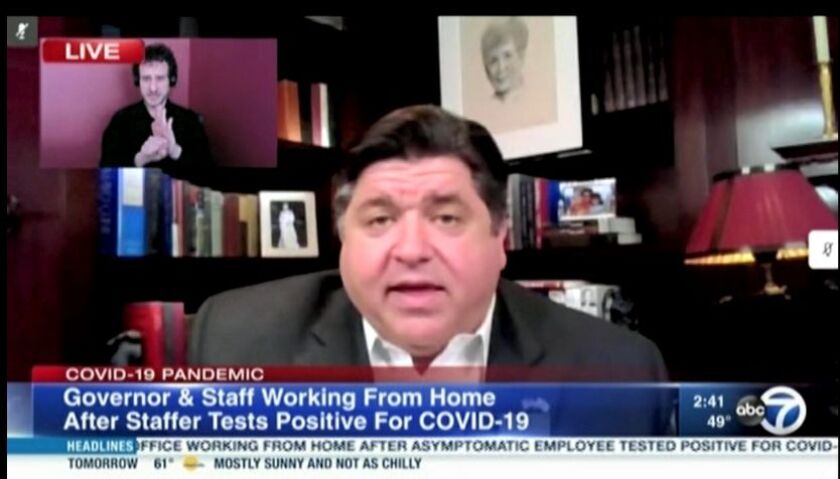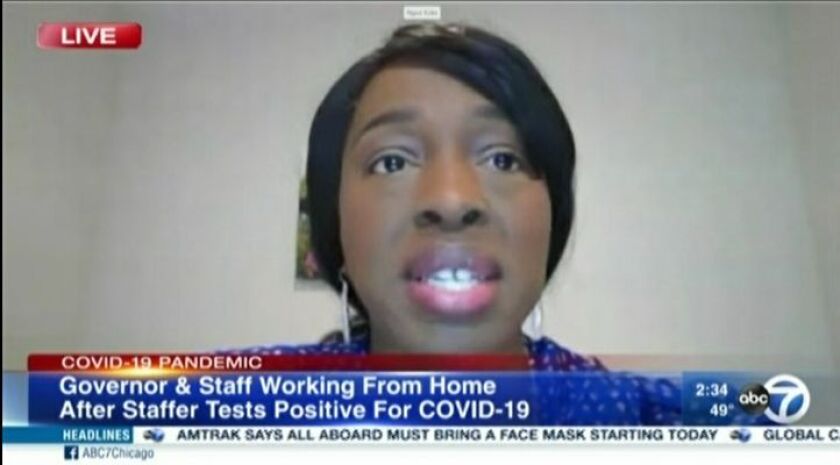Illinois’ peak period of COVID-19 deaths could stretch into early June – or possibly even July.
And that could mean 50 to 150 Illinoisans losing their lives to the coronavirus a day – or possibly as many as 300 each day.
Those were some of the grim estimates Gov. J.B. Pritzker delivered from his own home on Monday, a mix of troubling projections coupled with a few optimistic signs of progress for parts of the state outside the Chicago area.
The daily death toll Monday was 54, at the low end of the projections for the peak period. But that follows an especially deadly week, and it was announced amid a new round of scientific modeling.
And those dire projections come at an extremely inopportune time for the Democratic governor, who is facing criticism from Republican legislators, unemployed workers who appear stuck in limbo and President Donald Trump.
It also comes as many in Illinois are suffering from cabin fever, growing increasingly restless over their lives having been disrupted for more than eight weeks.
For the first time Monday, Pritzker delivered his daily briefing from his home office — a drawing of his late mother behind him — as he broadcast live after a senior staffer tested positive for coronavirus. The governor said he himself has tested negative twice for coronavirus.
The governor also offered some good news along with his bad news projections. After announcing his reopening plan last week that divides the state into four regions and evaluates phases of re-openings based on health metrics, Pritzker said all regions except for the Northeast region “are on pace” to be able to move to the next phase come May 29, the last day of the stay-at-home executive order.
The next phase, Phase 3, allows a number of businesses to reopen, with the use of “face coverings as the norm,” including non-essential manufacturing and some non-essential businesses, including barber shops and salons.
But in the Northeast region, home to Chicago and Cook County, the positivity rate — the number of positive cases compared to tests taken — remains too high. Still, the governor signaled there’s still time to get that number lower. His plan in part entails 14 days of a positivity rate under 20%.
In total, 3,459 people have died of coronavirus in Illinois — 803 of them last week. As of Monday, the state also reported 1,266 new cases, bringing the total of positive cases to 79,007. The state received 12,441 tests results.
In late April, Pritzker’s office released a COVID-19 projection and worst-case fatality scenario based on scientific modeling that predicted a range of 50 to 150 deaths per day into early May. That projection was created by researchers from the Illinois Department of Public Health, as well as researchers from Northwestern University, the University of Chicago and the University of Illinois at Urbana-Champaign.
The latest projection shows Illinois is indeed in a peak period for coronavirus deaths, but it’s less like a peak and more like a plateau.
The death range remains between 50 and 150 a day in models from both the University of Chicago and the University of Illinois at Urbana-Champaign. Northwestern University, however, is projecting a range of 50 to 300 daily deaths. The University of Chicago predicts the state seeing a death plateau until July, while both Northwestern and the University of Illinois at Urbana-Champaign are predicting it could last until June.
Beginning on April 23, the state saw 11 days in that originally predicted death range. On May 4, 46 deaths were reported. On May 5, the state saw its worst day with 176 fatalities. And since May 6, the state has consistently seen between 50 and 150 deaths a day, which is what the modelers predicted.
“We haven’t passed our peak yet. We have seen more stability in our numbers, but so far, we are not seeing significant declines in key metrics like hospitalization,” Pritzker said. “The updates to our models reflect that data.”
Pritzker said the time frame of “plateauing near a peak” into mid-May “has been expanded from mid-May into mid-June.”
“In many ways, this news is disheartening,” Pritzker said. “We have made great progress, but it’s forced us to remain at a moderated though still high level of key metrics for this extended period. A pushing out of our estimated peak is a natural consequence of flattening the curve. Remember that no one can truly stop this virus without a vaccine. But what we’ve been aiming to do since early March is slow down the exponential rate of transmission.”
The slowing down, he said, has helped health care workers to treat those with coronavirus and give pharmaceutical researchers time to develop effective treatments and ultimately a vaccine.
“Pushing the peak down and therefore to a longer time frame might not sound like good news to some, but I promise you it is saving lives,” Pritzker said.
The number of COVID-19 patients entering ICU beds went up by 16, from Saturday to Sunday night, according to Pritzker’s office. The number of ventilators being used by coronavirus patients also increased by 21, and the total number of COVID-19 patients increased by 26 patients.
The positivity rate statewide as of Monday is 10.17%. In the Northeast region, which includes Cook County and Chicago, the positivity rate is about 22%.
Meanwhile, Pritzker’s administration said the state has not yet received a shipment of swabs and viral transport media from the federal government. That shipment was anticipated in early May but has not yet arrived. The governor’s administration is also asking for federal help in obtaining surgical gowns, which are going fast, they said.








